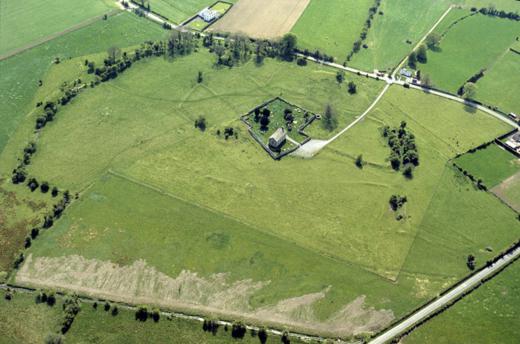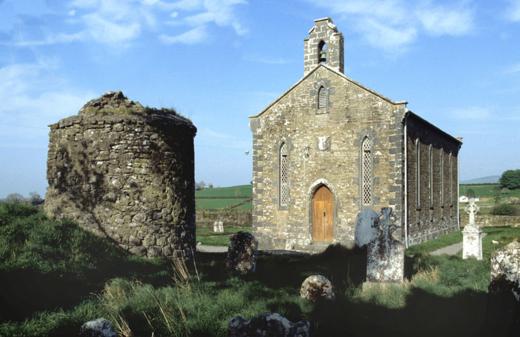
The name Seir Kieran derives from Saighir Chiaráin, meaning ‘the fountain of Ciarán’. The ancient church at Seir Kieran is associated with St Ciarán the elder, who is supposed to have spent 30 years in Rome studying the scriptures. In ancient times the church was a burial place of the kings of the ancient kingdom of Ossory.
Today pilgrims continue to carry out stations at St Kieran’s Well and St. Kieran’s Bush & Stone on his feastday (March 5th). Within the graveyard is the base of a 9th century high cross which features carvings of biblical scenes, such as ‘Adam and Eve in the Garden of Eden’.

Sometime before 1170 Seirkieran became a house of Augustinian canons and shortly after this date the priory church of St. Ciarán was built. The walls of this church form the northern boundary of the graveyard. The foundations of an earlier round tower can be seen on the external northwest angle of the priory ruins. The priory was dissolved in 1552 and sometime later the church was fortified when a small circular gun-tower was added on to the southeast angle. In 1844 the Church of Ireland built the present church, in which are housed a stone cross and some early cross slabs that were found in the graveyard. A sheela na gig from the site is now in the National Museum of Ireland.
To locate Seir Kieran on the Historic Environment map viewer, please click here.

